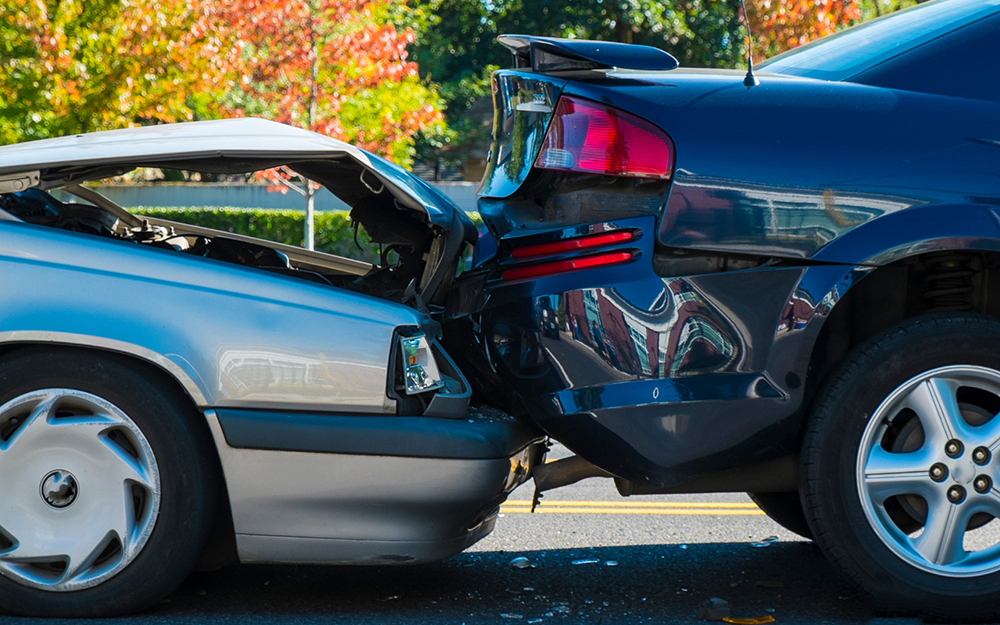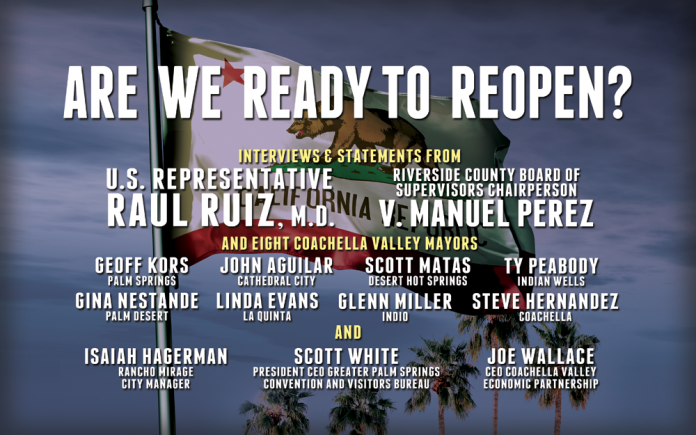
By Heidi Simmons
“This year cancellations in the last two months alone have deprived Coachella Valley businesses of roughly $2 billion in revenue and caused approximately 600,000 visiting tourists to abort their plans,” said Joe Wallace, CEO, Coachella Valley Economic Partnership. “The current disruptions mean that the visitor-dependent Coachella Valley is among the most negatively impacted places on the planet.”
The Coachella Valley Economic Partnership (CVEP) released the “Employment Impact of Covid-19 Coachella Valley” report May 4, as the debate whether or not to open non-essential businesses confronted Mayors across all nine cities of the valley. Wallace authored the report.
Leaders in the valley, county and state are finding that surviving the health crisis is creating an economic disaster that — like the Covid-19 virus — is difficult if not impossible to contain and is not yet over.
INDIAN WELLS
“It’s all very serious. It is not a game,” said Indian Wells Mayor, Ty Peabody about keeping the community safe and reopening local businesses. “We are working on how to appropriately reopen the valley using the guide lines (see inset) to make sure we are prepared for whatever comes next.”
The City of Indian Wells took immediate actions after the Tennis Garden cancelled the PNB Paribas Tournament on March 9, the first in a series of large seasonal events that evaporated from the Coachella Valley. The city of Indian Wells has 13 cases of the corona virus and no deaths.
“We lost $11 million. We immediately stopped all capital improvements and worked on our projected budget for 2020-2021,” said Peabody.
For all nine CV cities, the fiscal year ends June 30, 2020.
In 2012, Indian Wells started an “emergency fund” where they committed $2 million a year.
“It was intended for use after an earthquake or natural disaster. No one anticipated a pandemic,” said Peabody. “As a city, we are happy where we are right now considering this could be worse than the great depression. Our citizens have behaved well and we encourage residents to continue to follow social distancing, wear masks, and consider their health first.”
Peabody is working with other valley Mayors and County Supervisors to better distinguish and define “essential businesses.”
“The rules have some discrimination,” said Peabody. “How do you choose what is essential? Mathis Brothers carries furniture but had to close. [The store has reopened] Target also sells furniture, but they were allowed to stay open. Why shouldn’t some businesses open as long as they follow the protocols that are in place?”
Peabody has opened dialogue with professional golf and tennis organizers in hopes to get new events scheduled for this fall.
BILLION DOLLAR INDUSTRY
According to the CVEP report, in December 2019 there were 15,840 registered CV businesses with a total of 187,218 payroll-based jobs.
Approximately 1 in 4 jobs in the CV is dependent upon the tourism and hospitality industry which generates — when there isn’t a global pandemic — $7.5 billion annually. Hotels, resorts and short-term rentals pay a transient occupation tax (TOT), which provides significant revenue to cities.
Visitors spend $5.9 billion each year in retail store, restaurants, gas stations and other businesses across the valley.
The CV’s permanent residents number over 450,000. When snowbirds and tourists arrive during season, the population nearly doubles.
Leisure & Group Travel
Scott White, President/CEO, Greater Palm Springs Convention and Visitors Bureau (CVB) forecasts a $3.5 billion loss in tourism revenue through the end of the year.
“Models show the pandemic will have a significant impact on our destination,” said White. “We are still trying to understand the Governor’s metrics and how it’s applied. The Coachella Valley is lumped into the entire county, which is large and diverse. We are such a different physical area and are tourism dependent.”
Riverside County is the state’s fourth largest. It has a population of nearly 2,500,00.
White is advocating that the Governor’s metrics be applied by region so the valley and its top revenue producing industry can be supported and recognized during this financial crisis. At this point in the pandemic, he worries how many businesses are going to survive.
“There is so much unknown. Every week things change sometimes for the positive and sometimes for the negative. Certainly, I think we will be in uncharted territory for the next 12 to 18 months.”
The CVB is tracking demand through research and “sentiment polls.” As the weeks pass, White has seen that more people are becoming positive about travel and want to resume as much normality as possible in a safe way.
“What’s great for us is our proximity to the rest of Southern California,” said White. “We have a ‘drive market’ where people will get in their cars and take an extended weekend.”
Travelers are less likely to get on a plane or take a cruise.
“One of the challenges for us is not just the leisure travel, but ‘group centric’ travel,” said White. “Most hotels rely on a solid base of conventions, which make up 40 to 60 percent of their business. ‘Group’ travel is critical and they typically stay mid-week.
We are asking ourselves when will groups come back? Will people be willing to travel to the CV for a conference? Loss of group travel will likely have a long-term impact as opposed to leisure travel. But for ‘leisure centric’ travel to resume, it must feel safe. It is going to be a long process.”
White is thinking about the future of the tourism and hospitality industry, and how he and his organization can be a resource and advocate for the valley’s businesses.
“We try to stay involved and be apart of the conversation,” said White. “The CV does not attract business travel because our area does not have a diverse enough economy.”
The valley is primarily dependent on leisure and group travel.
“We are all trying to help each other and make sure we are in this together,” said White. “Travelers must feel safe with whomever they are interacting. Whether it’s a hotel, restaurant or retail store.”
CVB is committed to a regional pledge getting all the businesses aligned and putting in place guiding principles that can be used as a source for all valley businesses.
“We post protocols from area businesses on our website so consumers can know what a particular business has in place in terms of their safety,” said White. “We want to communicate to the traveler that the valley has a commitment to their health and safety. Everyone will do it a little differently and protocols will vary, but that’s okay as long as they are following the guidelines. It may create a dynamic level of competition that we haven’t seen before as businesses reach out for visitors.”
White has seen projections that valley tourism will loose 56 percent, over 25,000 jobs this year. The difficult part is how to bring employees back and reintegrate as leisure and group travel begins to resume.
While the Coachella Valley is playing by the Governor’s rules, some coastal cities have been taking leisure guests. While their season is just beginning, the CV was forced to shut down during the peak months of March and April.
“We’re here to advise hotels with the rules and mandates and the potential risk they are taking if they open too soon,” said White. “Our status has always been the sooner that we adhere to all of the mandates, we flatten the curve, we reduce the number of cases, the sooner we are going to get reopened. We want to make sure that our actions don’t increase Covid cases. Which would delay openings.”
White hopes the valley will be at a point where it can allow large gatherings and the festivals can operate even if it’s not at full capacity. Under the Governor’s guidelines all stages have to be met. Phase Four allows for large gatherings. (see inset)
“That would be Christmas for the industry if we could get back to gatherings and large groups. But it is too soon to tell,” said White. “If large events can provide an environment where people feel safe, and the government and hospitals systems are comfortable with it as well, then that would be great.”
White points out that it’s not just the visitors who have to feel safe and comfortable but also the valley’s residents and workforce.
“People have to get use to visitors navigating through our communities,” said White. “We all have to be safe and respectful of one another. Over the next few months it will be about finding the balance of the visitors comfort level, and more importantly, that residents feel comfortable and safe.”
White and his organization will be advocating for a 30 to 40 percent hotel and resort occupancy in a phased approach.
“Employees need to be trained and procedures implemented,” said White. “There are a lot of variables that need to be developed so that we can open effectively. It’s going to take all summer to get there.”
White would have preferred the pandemic hit in June and July to allow the industry to finish its lucrative season. Meanwhile, CVB waits to see what happens.
“With this pandemic shutting the industry down, there is a lot that needs to happen before we reopen our hotels,” said White. “We have to make sure employees have protective gear and the materials they need to stay safe and healthy. There are quite a few barriers before we can open successfully.”
Even when the tourism and hospitality industry resumes, White believes it is not going to be the same.
“It’ll be awhile before we get to the same numbers,” said White. “People will be cautious. I don’t see that the same level of travel is going to take place. A smaller percentage of people will be traveling. I don’t see us back where we were in fall 2019. The landscape will look more like it did post recession and continue for the next 18 months or two years.”
Some CVB research has indicated that one third of travelers said, they are not going to travel until 2021; another third said, they would take shorter trips where they feel safe; and the last third said, it is not a big deal especially if they can take advantage of the cost savings and reduced crowds.
“This is a very resilient destination,” said White. “We have to collaborate and be unified as one destination. We talk about the CV as nine cities — one oasis. We are of the mindset — one large city with nine different neighborhoods where each has its own personality and identity.
When it comes to something like this we have to find a way to work together so we are all safer. I believe we will succeed but no one knows how long it will take. The last thing we want to have happen is the virus boomerangs and we go back to where we were in March — or worse. It’s important that we have a plan, it may be slower than people like, but it’s out of our hands. Hopefully we can get to where there is one voice, one direction, and we all work hard to get there.”
JOBS & UNEMPLOYMENT
CVEP’s numbers for the valley’s unemployment rate prior to the Corona virus was 7.2 percent. This May, Wallace believes it will be over 40 percent.
“To see such devastating impacts on employment is disconcerting,” said Wallace. “We could see the closure of 4,752 businesses as a result of this crisis. Because many businesses serve the tourism industry, it is not unreasonable to expect the casualty rate among small business to be higher than the state, national and international estimates.”
CVEP projects that the top three largest occupations will suffer the greatest. Sales and Sales-Related, Food Preparation and Serving-Related, and Personal Care and Service make up much of the CV’s workforce. The economic partnership estimates a total of 33,860 or 63 percent of jobs will be lost.
The report notes that these top three business sectors are also the three lowest paying jobs. Although 1 in 4 jobs is directly hospitality related, about 50 percent of all valley jobs rely to the industry.
“The most vulnerable members of society are bearing the highest burden of job losses,” said Wallace. “The ‘timing’ of the Covid-19 crisis has been lethal. Businesses with high concentrations of jobs in tourism, hospitality and food have missed their busiest season, effectively creating six months of summer for Coachella Valley businesses.”
DESERT HOT SPRINGS
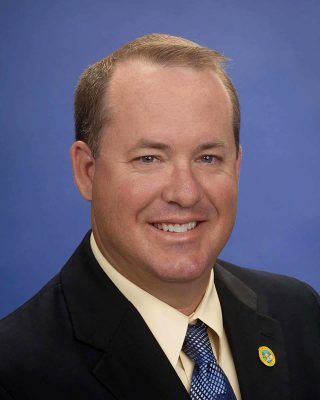
Desert Hot Springs Mayor, Scott Matas, is proud that the residents have been so diligent in following the stay at home orders. The city has suffered no deaths to the virus. There are 50 Covid cases.
“Kudos to the community,” said Matas. “They have taken the pandemic seriously and it’s helped. Even though it’s difficult right now, people seem to be getting through it. We have residents who are essential workers and still working, but a lot of the workforce is in retail and hospitality. Maybe 20 percent are unemployed. We won’t know the exact figures until later this year.”
Considered a bedroom community, Desert Hot Spring is geographically surrounded by undeveloped desert. Eighty-nine percent of working residents commute to other CV cities.
Cannabis is considered essential business and has helped with employment and keeping the city afloat, but according to Matas, it will be another three to four years before it’s built out and becomes the city’s main industry and top revenue source. Fortunately, the new city hall and the street improvement projects underway were funded years ago.
“We have to consider changes to our budget for the next fiscal year,” said Matas. “We put city hiring on hold, but there’s not a lot we can do. We put together a task force and want to get to Phase Three as quickly as possible. Otherwise we may lose businesses. We have to be careful how we move forward, because we can’t put ourselves in a position where we could lose future county funding.”
Phase Two is a challenge for the city, but it has allowed some businesses to open. Government leaders make changes and announcements everyday and they do not always align. It is taking cities time to sort out the information coming from both the County and Governor.
“The biggest worry for all the politicians besides the economy crashing is the health of our communities,” said Matas. “The county and cities survive on the valley’s economics, so if the virus comes back in December like some have predicted, we could lose more people and businesses.
Last week, the city’s senior center, Rotary Club and the CV’s food bank delivered 520 meals to families and shut-ins. I worry about our economy getting back on track, but the health of our community is a priority.”
THE COUNTY OF RIVERSIDE
Riverside County follows Los Angeles County with the second largest number of coronavirus cases 5,248, 185 hospitalized and 225 deaths. The county has tested 75,069. It is over 7,000 square miles. It spans from Orange County to the Arizona border. The population is 2,440,124 with 28 incorporated cities.
- Manual Perez, Chairperson, Riverside County Board of Supervisors, represents the fourth district, which begins at the west end of the Coachella Valley and extends across California’s desert, covering 5,000 square miles.
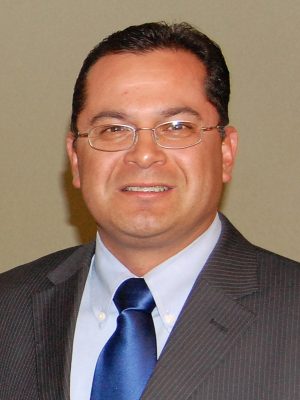
Most valley mayors are in favor of “regional variances” as the county’s west and east regions have such different communities and economies. The county received $436 million from the Federal government to deal with the public health crisis.
“We need to make sure we suppress and fight against the pandemic,” said Perez. “It is still among us and continues to be. We strongly recommend that we all continue to follow the protocols, do our part – stay in place, use facial masks, wash hands, and social distance until we see a downward trend (sic), which we have over the course of months.
However, its also very import to balance that with thinking about what does economic recovery look like and how do we transition. How do we do this in a way that can garner the support of the Governor? Because in the short term, although it’s important, it seems like we need to open, but in the long term we don’t know if it will spike a surge.”
Perez is working in coordination with the Governor’s office so that in the future the county is able to receive funding from the State.
“The state funds things like disaster relief and supports Cal State University, Palm Desert. We want to be able to fund programs that diversify our workforce and economy, and insure we get funding streams for the Salton Sea restoration,” said Perez. “There are a lot of other areas we need to be mindful of. We need to get people back to work safely and at the same time keep fighting this pandemic.”
For the most part, the County Board of Supervisors has had a lot of support, but there are people who are not happy with the direction the Board is taking. Perez is doing his best to bring along those who disagree.
“At a county level, there is going to be a $100 million deficit in 20/21 [fiscal year],” said Perez. “I know cities are facing large deficits as well. On one end, we need to suppress the pandemic and on the other end, we have to open up the economy in which we are cautious, taking care of customers and workers, so that we are not hard hit to the degree of the great depression. This is something that concerns me very much.”
Although Perez has not directly met with the Governor, and the Governor has not threatened counties with withholding funding, there are counties in the state who tried to reopen only to find the state revoked licenses and emergency funds.
“I want to work as closely as I can with the Governor to do the right thing,” said Perez. “Even though our Covid case numbers are rising, the county is testing at a much higher rate than any other county in the state. We have a 2.8 percent testing rate per capita in relation to our population. As a result, it seems we have more cases and deaths.
This week, we will have 13 sites in addition to the private sites already testing. We are adding 75 to 200 tracers [people who track the infected] so we can insure the safety of both those who tested positive and those they came in contact with.”
Riverside County has 17 hospitals. The county is actively coordinating with healthcare professional to share resources, stock supplies and consult with doctors to prepare in the event there is a surge.
“We have two areas of concern regarding the thresholds required by the Governor,” said Perez. “For a county our size it is impossible to meet the 14 days without a death and to reduce cases to 1 in 10,000. Other required thresholds are possible and we are moving to ramp up contact information, house the homeless, provide safety material to protect workers, and so on. We are demonstrating breakthroughs and seeing downward trends. The Governor’s requirements are challenging. Why not use the CDC guide lines?”
Perez recognizes that valley mayors are getting antsy and each has challenges within their own cities. The Coachella Valley’s tourism and hospitality business is the most lucrative industry – at $7.5 billion – of the county’s five districts. The crisis and subsequent economic disaster has affected everyone in the valley either directly or indirectly.
“They want to open now. I get that,” said Perez. “I believe we have to think in terms of regional variances, but it doesn’t mean it will change the requirements. People are saying its either one or the other, save lives or the economy. I’m saying it has to be a balance. We have to do both. No one knew this was coming even though we talked about it when it first appeared in China.”
The first person infected came into the United State from Wuhan, China, arriving at March Air Force base which is in Riverside County.
GROUND ZERO
“We were ground zero. Then the first death of corona virus was in in the CV,” said Perez. “When the workers at the Murrieta nursing home didn’t show up, it was the county that mobilized a team and moved the people even though it’s a state regulated business. We are doing everything possible to demonstrate to the public that public health is number one and we work everyday to meet the Governor’s requirements.”
The County has received $436 million in Federal Funding. The County Board of Supervisors is still deciding how to best use and distribute the funds. Some of it will go to cover their deficit.
“We cannot grant the money to cities, but potentially, the funds can be used for small main street businesses who didn’t qualify for the PPP – Paycheck Protection Program. Restaurants, hotels, retail can receive some relief to help keep them a float and prepare them for Phase 2.5 openings.”
For Perez, funding more testing is an option and he is open to other ideas that will directly help the public health crisis. When it comes to recognizing the CV as a singular regional entity reliant on one major industry, Perez doesn’t necessarily have a problem. He understands and recognizes the valley’s unique conditions.
“I have to think about the state, the county, the district and the micro areas,” said Perez. “Our economy has been hard hit and it will take some time for the region to recover. We need to convince the Governor to fast track where possible to help the valley reopen.”
Riverside County is funded in part by the Federal government, and revenue is generated through sales and property taxes.
CITY OF COACHELLA
The City of Coachella has set their goal to be absolutely safe. It has had 169 cases of Covid-19 and three deaths.
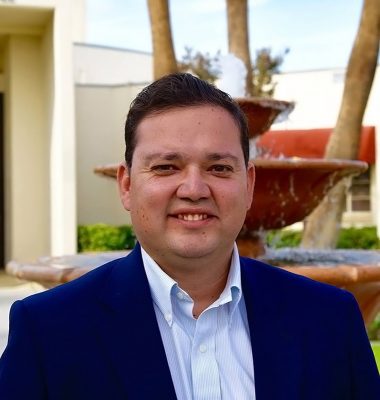
“Coachella is not a tourism economy,” said Steven Hernandez, Mayor of Coachella. “We are not reliant on the festivals, tournaments or large events like other cities. The city is okay financially. But a lot of our residents work in the tourism industry. They save during season for the summer months.”
Hernandez has been in public service since leaving college. He is 37 years old, and this is the second economic crisis he’s experienced. He has seen the fallout of financial disasters and how they devastate families and businesses.
“Nothing worse than folks losing their jobs,” said Hernandez. “Domestic violence, substance abuse, depression, suicide – there’s a whole lot of stresses when there is a loss of economic opportunity.”
Hernandez does not see the cancelled “big” events returning in the fall and plans to be in lock step with the county requirements. He does not want to draw the ire of the government.
“We have to be creative and nimble,” said Hernandez about local leadership. “I’d like to see personal protective equipment (PPE) manufactured here in Coachella instead of China. Businesses need to have the necessary supplies to operate. There are opportunities here for entrepreneurs.”
LA QUINTA
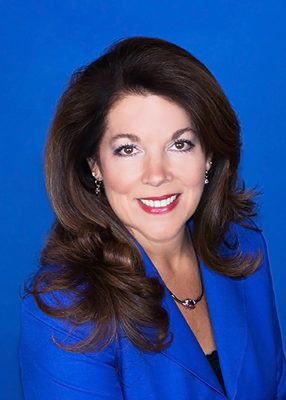
On May 1, La Quinta Mayor, Linda Evans sent letters to California Governor Newsom and the Riverside County Board of Supervisors requesting the “sub-region” of Riverside County — the Coachella Valley — be allowed to open more businesses. The letters were signed by mayors Evans, Nestande, Miller, Peabody and Matas.
The letter to the Governor requested specific dates through May 22, to reopen valley businesses – restaurants, services, and hotel/resorts in order to be prepared to accept leisure guests in a limited capacity for Memorial Day weekend.
In part, the letter to the Governor read: “We believe that the health data provided by Riverside County for our respective cities, in addition to our valley’s ability to continue to monitor cases, should allow our cities a thoughtful reopening of our economy.”
The two-page letter mentions that the extensions of the stay at home orders “…are not only mentally and emotionally intolerable, but also an economic disaster.”
Evans also wrote that valley cities support delaying the reopening of large gatherings, group sports, movie theaters, and schools. Evans works in the health care industry for Desert Care Network.
The letter to County Supervisors concluded: “With the collaborative knowledge and guidance from the cities and county used to keep the public’s health and safety maintained, it’s time for our residents to decide on their own if they choose to remain sheltered in place or if they decide they want to work, shop and live – for the betterment of our communities and our health.”
Whether or not Evans’ letters were making impossible demands, the message was received by the Supervisors and Governor. That same week, the Governor moved to make some adjustments and address the very serious issues in Evans’ letter.
“Reopen safely is the mantra,” said Evans. “We need to forge ahead and learn to co-exist with the Covid virus. It’s out there, but we can’t live in fear.”
La Quinta has 83 Covid cases and seven deaths.
PALM SPRINGS
With Federal leadership lacking, local governments are taking steps to set public health mandates within their own jurisdictions.
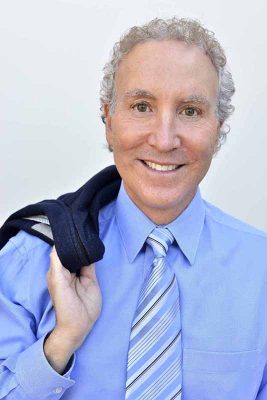
When the County rolled back protective facemasks, the Palm Springs City Council voted to require face coverings when anyone is in an open business, masks are to be provided to employees and in places where people cannot maintain physical distancing.
The city has 108 cases of the coronavirus and nine deaths.
“I have to say, I am very appreciative, as always, and even more so to live in the valley and to be in Palm Spring,” said Geoff Kors, Mayor, Palm Springs. “Everyone has acted with thoughtfulness and kindness.”
The city is following the Governor’s orders and is doing everything they can to be ready for the tourism and hospitality industry to rebut.
“Yes, the county is aware of the unique economic crisis in the Coachella Valley as well as the state and nation,” said Kors. “We have advocated that the Governor consider looking at parts of counties separately from the entire county. In the CV we have a disproportionate number of Corona virus cases. We have also bent the curve faster than the state as a whole. So, if we can meet the criteria, the question is, can we be considered a separate region? At this point it hasn’t been allowed but we will continue to advocate for it.”
The city is looking at a $28 million hole in their budget just from mid March through June. Next year, they are looking at a $47 million shortfall in a $125 million budget. Many of the construction projects continue and building plans are still being submitted.
“Without tourism able to safely resume, we are going to have significant reductions in the services we provide,” said Kors. “Palm Springs and other cities in the valley will have to adapt to the circumstances.”
“Overwhelmingly, the residents and businesses in Palm Springs have been wonderful,” said Kors. “People have really stepped up and taken the situation seriously. As a result, we went from a hot spot in Palm Springs, in the number of cases and deaths, to fortunately, not having had a death since April 18th. The rate of increases in infections spiked with Palm Springs having testing sites early on at Desert Aids Project and Desert Regional hospital.
We have seen the increases flatten. That’s all thanks to our residents and businesses for doing the right thing. By continuing to wear face masks and practice physical distancing, we will not only be able to protect the health of our residents and workers, but we are able to help our economy.”
When it comes to the big events returning to the valley, Palm Springs would gladly welcome the visitors as long as the criteria is met and there is no longer a threat to the community. People who use the Palm Springs International Airport, whether flying in or out, is a public health concern. Flights have dropped more than 90 percent.
“The Governor has made it clear that those big events will be the last phase to be allowed,” said Kors. “We are always hopeful that we will reach the criteria he has set. In order for those events to happen in Palm Springs and the valley, there needs to be a treatment or vaccine in place. The large events are so important to our residents, our workers and economy, but of course public health comes first and we will follow the Governor’s guidelines.”
Forty percent of Palm Springs’ population is over 60 years old. Both the city and valley have higher incidents of asthma, heart and pulmonary disease, diabetes and HIV, which are underlying conditions making those residents more vulnerable to the Corona virus.
“Given the vulnerability of our community, it’s really important that we not only take care of ourselves, but take care of our families, friends and neighbors,” said Kors. “That’s what Palm Springs residents and businesses have been doing and the results speak for themselves.”
Kors has discovered the need to provide the community with as much useful and thoughtful information as possible so people know exactly what the rules are, can see the data on the virus for themselves, and feel they are getting the most reliable information.
“Our website gets updated daily. It has sections for employees, employers, residents, renters, businesses so people can get information easily,” said Kors. “We have done several webinars. When people have the answers to their questions, they have less anxiety.”
As restrictions continue and some lift, there are people in the valley who fear their civil liberties are at stake. Part of Kors’ career was spent as a civil liberties attorney.
“I take civil rights very seriously,” Kors said. “You have the right to drink. You have the right to drive. But if you drink and drive, and put someone else at risk, you’ve broken the law. We go even further because of cost issues. You have to legally wear a seatbelt when you get in your car even though the only person who is going to get hurt is you for not wearing it.
Why, all of a sudden, is not wearing something that would protect you, those around you, and who are bravely serving you during this emergency, become acceptable to anyone? I don’t understand it. If we do things to protect public health, we get the economy open faster, there will be fewer infections, and people will feel safer going out and spending money.
There is no benefit that anyone can show in allowing someone to go into a business without a face covering. If people are allowed to go to stores without face coverings, a lot of people who do wear a face covering won’t go because they don’t want to be put at risk.
Our workers in grocery stores, pharmacies, restaurants and hardware stores who see hundreds of people a day and are acting with such kindness and professionalism shouldn’t be compromised.”
During the crisis, the city has reached out to its districts, residents and businesses to consider how to make the most of the new normal.
“An idea came from a meeting I had with the Arenas Districts Merchants Association and it moved into a broader plan that we are working to get it done and do it throughout the city by the time were are allowed to reopen,” said Kors. “We are advocating to the state, and have had meetings, to allow restaurants and bars to expand their outdoor dining in parking lots and potentially closed downtown streets like Palm Canyon and Arenas, so they can increase the space to serve people when they reopen, making customers feel more comfortable. Who doesn’t want to eat outside in Palm Spring, right? It’ll be lovely. That’s the way we are going to come through this. We have to be creative.”
At this point, the Governor is not allowing leisure travel and the stay at home order is still in place.
“We have to work really hard to meet the criteria he set as a region,” said Kors. “If they are not possible, but we are close and can meet public safety, then we should be proposing those to the Governor. If travel is allowed this summer, Palm Springs is a great place to come. Summer nights are magical.”
PALM DESERT
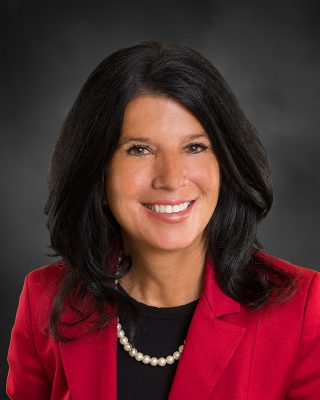
“This is not about lives versus money,” said Gina Nestande, Mayor of Palm Desert. “I view it as lives versus lives. All lives matter. Every day people are being pushed into poverty, which shortens life expectancy and creates other social problems. This is a very difficult situation.”
Nestande watched the Governor’s Friday, May 8, press conference four times to get an understanding of the second phase.
“I thought the Governor’s message was confusing. He moved the goal post even further making it more difficult than the CDC’s guidelines,” said Nestande. “I can’t find it in the constitution where it says what businesses are essential and which ones are not. It’s not a crime if you want to work and provide for your family. It feels like we are in a dictatorship. For those who want to get back to their lives, we need to. This isn’t sustainable.”
Palm Desert has 123 cases of the Covid-19 and 11 deaths.
“If we can get Coachella Fest to happen in the fall, we will come out of this sooner than later,” said Nestande. “For every one person who says they are afraid, I have five saying they want to get back to work.”
Nestande is compelled to get an antibody test for her community in hopes to lower the denominator, which could reveal a lower death rate, and hopefully put things right again. She has been in touch with a USC research doctor who has been conducting repeat testing.
Unlike the Corona virus test where it shows only if you have it or not, the antibody test reveals if you had the virus, carry antibodies or never contracted the virus. The test is a pinprick of blood and the results are available in minutes. It does not however, reveal if you have the virus or are a carrier.
“Data is showing that for every positive Covid-19 case there are 50 to 85 times the population that have had the Corona virus. They may not have known it, or only had mild symptoms,” said Nestande. “What the antibody test does is increase the denominator of those who had the virus. If we know there are more people who have had the virus, it will push down the mortality rate. This data is the information we need to push-up to the county and the Governor to remove restrictions and open business.”
Nestande is working with Chad Mayes, California Assemblyman, 42nd District, to find a project manager and obtain funding for a random sample antibody test of 2,000, like USC’s testing program.
“The county has received $436 million that is sitting in an account,” said Nestande. “There is also FEMA money available. To do the test properly it would cost $200,000. Researchers get a cross section of volunteers. And it has to be done again in another month to see if the numbers are going up or down. It’s a major operation, but they are doing it in Los Angeles County now. This is the kind of data we need to move ourselves forward.”
CATHEDRAL CITY
Cathedral City has the largest concentration of small businesses in the valley numbering 1,065. The city is less reliant on transient occupancy tax (TOT) than other communities and the car dealerships, the largest in the valley, contribute tax revenue. The dealerships have remained open as essential businesses with service and repairs. The city has 106 cases and one death from Covid-19.
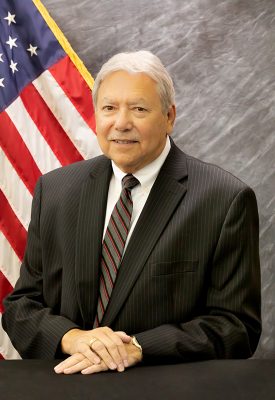
“The city has planned for a rainy day and if there ever was one, this is it,” said John Aguilar, Mayor, Cathedral City. “We do not know where this is going to lead. The city is very strong financially and has strong reserves that this council and those before planned for. All cities are going to be struggling. We want to maintain our current level of service, balance our budget and increase our reserves if we can in this environment. We are not in a position to offer grants.”
Residents and businesses have reached out to the mayor, and the city has used social media to make sure people have the information they need to get through the challenges of the pandemic regarding both personal health and with ways to save their businesses.
“You wouldn’t be human if you didn’t have some anxiety,” said Aguilar.
The County’s efforts to relax some of the protocols and take steps to open the economy are appreciated by the mayors, but many disagreed as the county rolled back safety precautions. Aguilar is aware that many in his community have underlying conditions, which make them more vulnerable.
“I would love to see all the festivals return. We have festivals here that were cancelled,” said Aguilar. “Events should be looked at on a case by case basis. My perspective is: why would I want to put any of our citizens in harm’s way if we don’t have all the answers in place. If you practice good health protocols and can save lives, why wouldn’t you continue to do that until we are over the hump and have a vaccine in place. We will do nothing that might jeopardy the community’s health.”
When it comes to local governments making decisions for their communities, city councils have limited authority, but are able to implement their own mandatory orders. Civil liberties versus public health have become an issue for some communities.
“They are both important. We shouldn’t have to choose one or the other,” said Aguilar. “The restrictions that we are all operating under now are difficult and they do impede our normal way of life. This pandemic is something we didn’t create so we are just trying to manage it. Managing it as you would a natural disaster, sometimes we have to do things that are uncomfortable. If someone could show me a way – they haven’t yet – that we could lift all the restriction and go back to the way of life we were living two months ago, I’d be the first to say sign me up. But we’re not there yet.”
As cities weigh the benefits and risks to keep our way of life in the Coachella Valley healthy and functioning, a common analogy is the light switch. It is not just turning the switch on or off, it is like a dimmer that gradually turns up the brightness.
RANCHO MIRAGE
The city of Rancho Mirage projects it will lose between $4 and $5 million in revenue from March through June 2020 due to the pandemic. The city has 29 cases of Covid-19 and three deaths.

City Manager, Isaiah Hagerman submitted financial information and a statement as the mayor’s seat transitioned last week from Iris Smotrich to G. Dana Hobart.
Hagerman: “The City of Rancho Mirage, its businesses and citizens are extremely resilient and giving. The City Council have stewarded the City’s financials to weather unforeseen circumstances that may disrupt its economy. We are often referred to as the Heart of the Palm Springs Valley so we are confident we will continue to be a top destination in Southern California. Although this pandemic is having a devastating effect, we are a close-knit community filled with brilliant, innovative and hardworking people. It’s too soon to tell how long the rebound will take, but spirits and optimism will remain high.”
INDIO
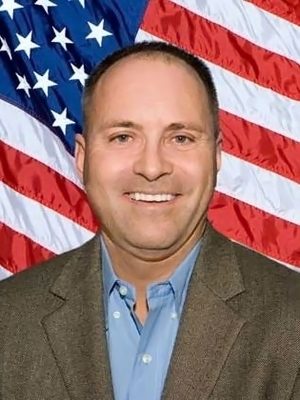
Indio’s mayor, Glenn Miller, knows exactly how many days until the October return of the postponed Coachella Music and Arts Festival and Stagecoach. The city has a contractual obligation with Goldenvoice, and Miller is confident the events will take place.
“Our number one priority is the safety of everybody in the city,” said Miller. “We are looking at what we can do to move forward hopefully with all the proper procedures in place. We are working toward those goals.”
Indio has the largest population of the nine CV cities. They have 163 confirmed cases and five deaths. Miller believes the city is ready to reopen all businesses.
“We have a lot of mom and pop businesses,” said Miller. “You can’t treat all businesses the same. Give us the guidelines and we will do what we have to do to make it work to their advantage. If someone is uncomfortable opening, they don’t have to open. They set their future. As long as businesses have the proper procedures in place and are making sure they, their families, guests, and employees are safe, we are here to support them.”
HOTELIERS
“I have a strong feeling that we will recover faster than other communities,” said Aftab Dada, Vice President, Managing Director, Hilton Palm Springs. “I believe we will see gas and oil prices lower, creating a greater ‘drive market.’ We are a society that likes to move, to get out and around and spend money. We still have 360 days of sunshine with lots of space.”
Hilton Palm Springs is one of two hotels allowed to remain open providing housing for essential workers from airline employees to quarantined health workers.
Shannon Anderson, Hilton’s General Manger, does her best to focus on the future and consider what hospitality looks like from behind a mask.
“People can’t see us smile, we can’t shake hands,” said Anderson. “We are in the business of hospitality so how do we take this on board and move forward. How will room-service, breakfast and buffets look? How many guests will be able to enjoy the pool? This is something we have never experienced before. There’s no historical data or a Ted Talk to reference. The landscape is changing, and it’s a constant conversation.”
Conservatively, Dada believes the pandemic will set the valley back three to five years with lingering and lasting effects. He is glad the government has infused the economy with so much liquidity, and hopes there will be another round as people and businesses get back on their feet. He sees social distancing, masks, and hand washing as something that may become the norm.
Coachella’s Mayor Hernandez, who grew up in the CV, considers what the valley might be like in the future without the festivals.
“In the 80s and 90s, the valley didn’t have events with 100,000 plus people coming here during a single weekend,” said Hernandez. “People came for Spring Break, golf, tennis and the sun. It could be that way again.”
“This is a resilient destination and we will get through it together,” said CVB’s White. “I’m of the mindset that we are all one city with nine distinct neighborhoods. We can be safe together.”
Local governments have had to step up and deal with the public health crisis and the resulting economic disaster. It is a global event. The survival of the Coachella Valley depends on the people who live in our desert communities. It absolutely seems to be the truth when folks say we are all in this together whether they like it or not.
“Social distancing is the worst thing that can happen to a tourist-based economy. It is worse than a 7.5 earthquake or a toxic Salton Sea,” said CVEP’s Wallace. “It will not be a death blow, but it will be a life-changing event.”



























